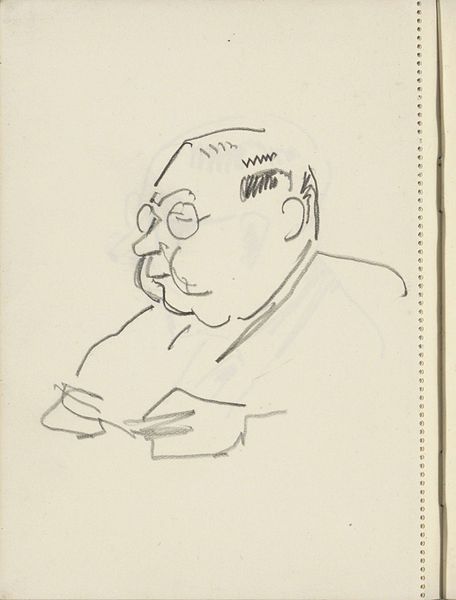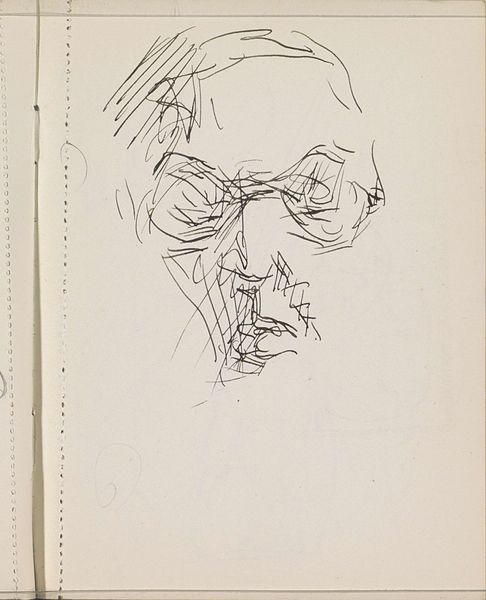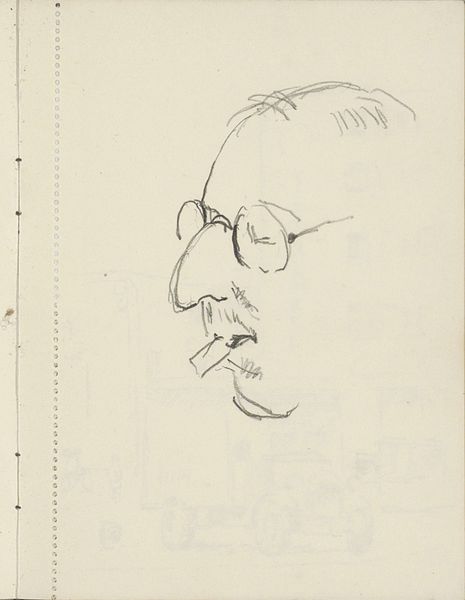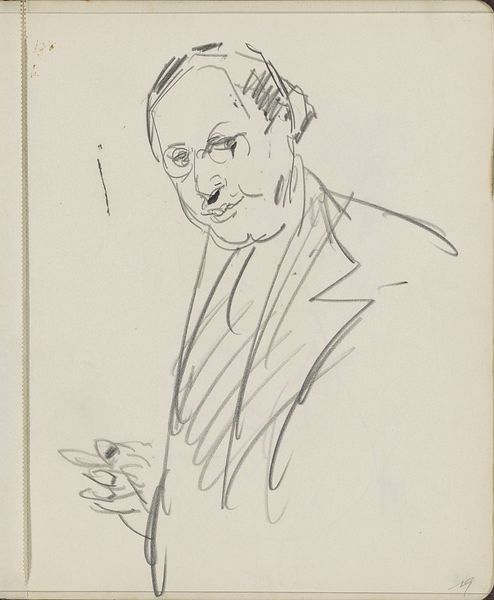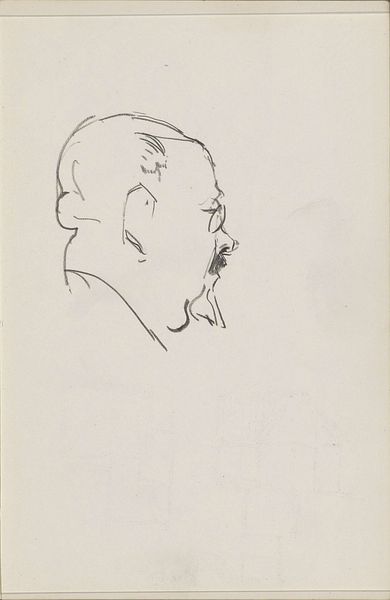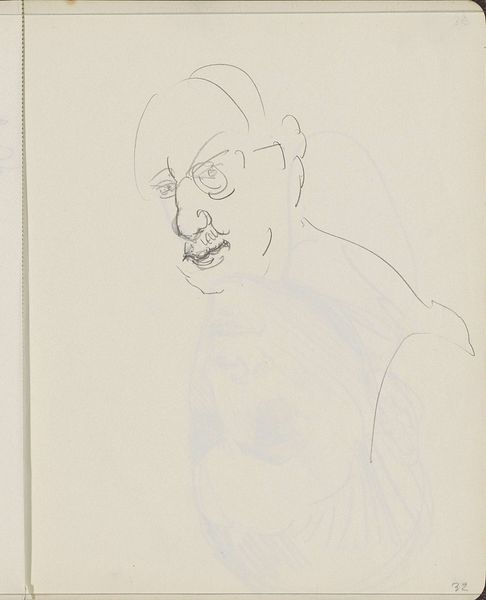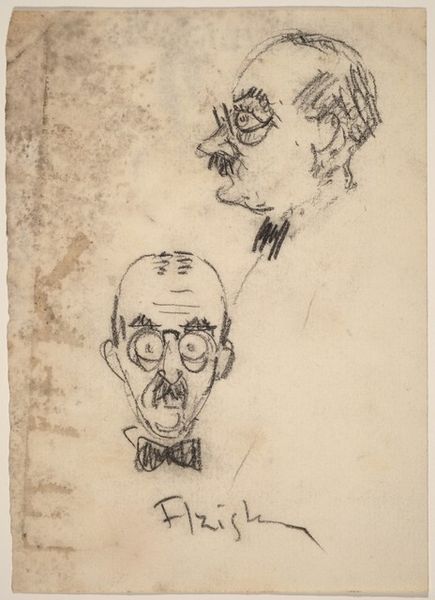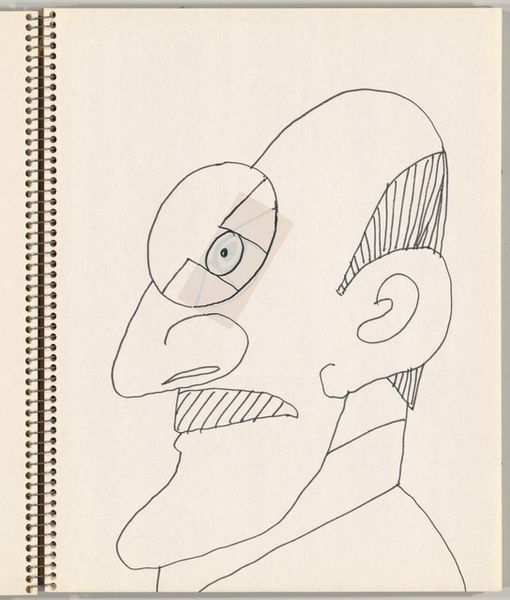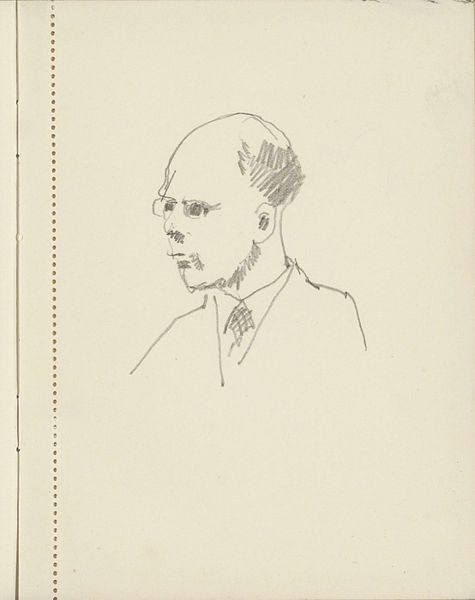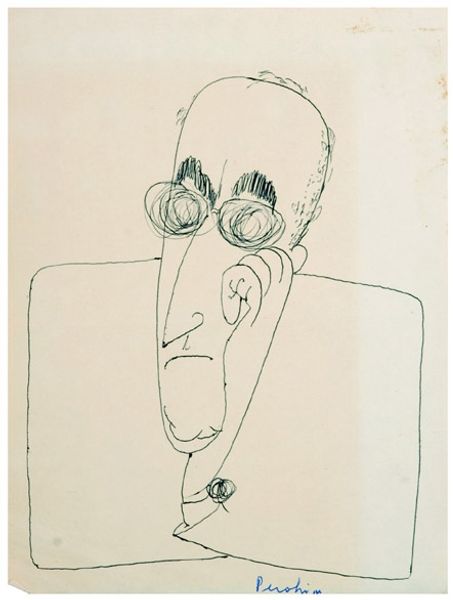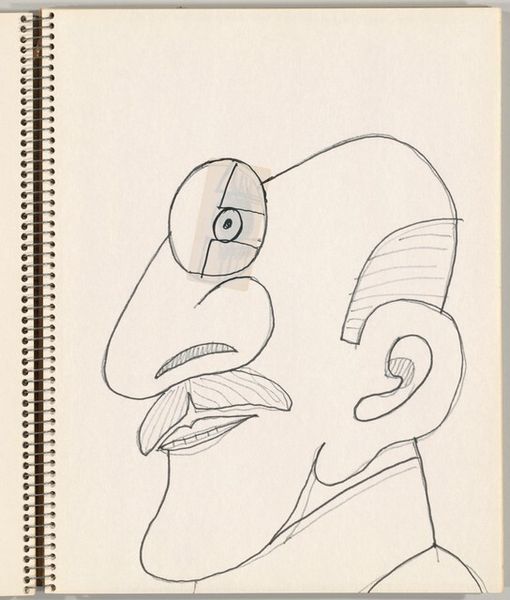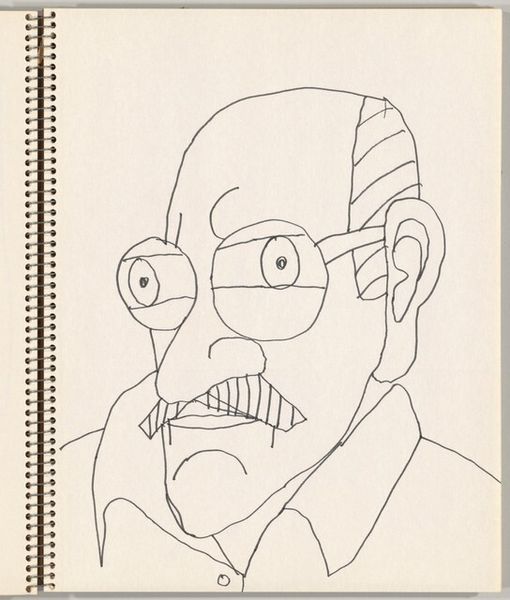
drawing, pencil
#
portrait
#
drawing
#
pen sketch
#
pencil
#
realism
Copyright: Rijks Museum: Open Domain
Curator: Here we have Cornelis Vreedenburgh’s “Head of a Man with Glasses,” a drawing made sometime between 1890 and 1946. Editor: My immediate reaction is that there’s a distinct melancholy to the work. The downward gaze, the simplified lines... it speaks to a quiet resignation. Curator: Interesting. For me, what stands out is the artist's deliberate choice of pencil and paper. It points to accessibility, to a medium readily available. Was this portrait destined for a grand salon, or was it always meant to be more immediate, more democratic? And did this subject have the social means to pay the artist to capture the essence of himself? Editor: Well, considering the timeframe, it's difficult to ignore the rising tide of anxiety permeating intellectual circles. The portrait could reflect the individual's struggle for visibility amidst societal upheaval. It speaks of a crisis in representation, almost like the person’s identity is being simplified or erased. I wonder about this individual and the weight they had to bear at such a transformative time in the world. Curator: Yes, the minimalist technique emphasizes the face. We should consider the paper quality itself – is it mass-produced or something more specialized? The means of production reflect larger artistic movements challenging traditional notions of art and craft during the 20th century, making space for the democratization of tools and subject matter, regardless of who the subject is. Editor: Absolutely. It’s fascinating how the glasses themselves function as both a literal and metaphorical lens. They signify intellectualism, but also create a barrier, perhaps speaking to the inaccessibility of knowledge, or the way perception is always mediated by structures of power. What did being nearsighted mean at this time? It brings to mind ideas of seeing, knowing, and being seen, all complicated by visual impairment. Curator: Examining the material and the circumstances allows us to reconsider these common notions through an economic and social lens. I see this now more like an exercise on capturing someone and bringing his experience in the world, perhaps unseen and burdened, to light. Editor: I concur. It's compelling how a seemingly simple sketch, with a focus on identity and social context, manages to convey the profound sense of societal burdens on this figure’s posture and downward-cast gaze.
Comments
No comments
Be the first to comment and join the conversation on the ultimate creative platform.
